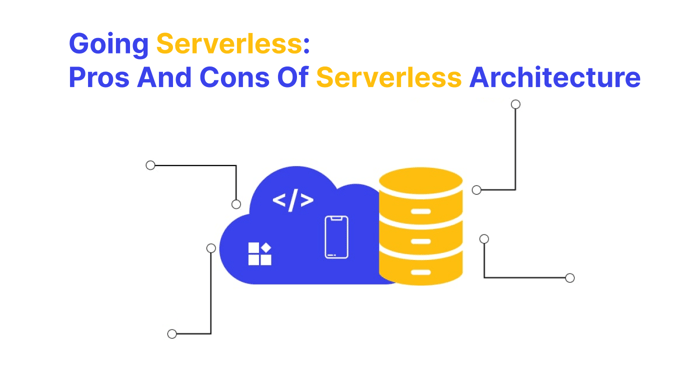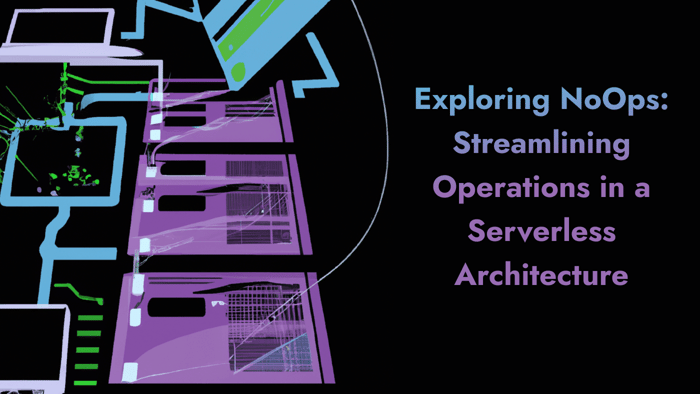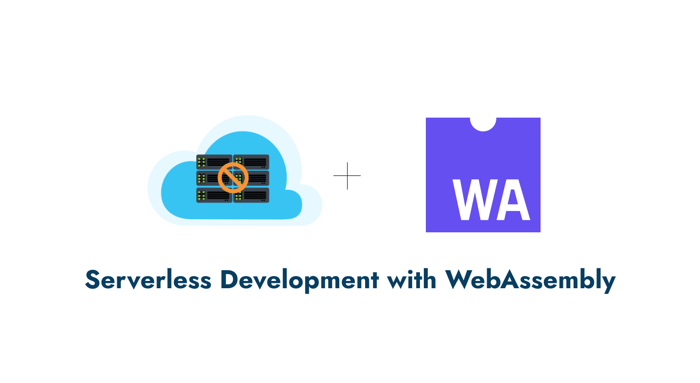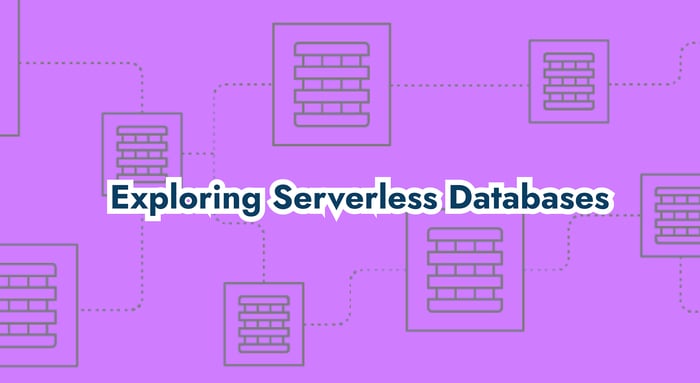Learn how to convert your system architecture to serverless successfully.
From startups to enterprise-level organizations, serverless computing has gained significant traction due to its promise of scalability, cost-efficiency, and simplified infrastructure management. The rise of serverless architecture has been nothing short of remarkable.
For example, a streaming giant like Netflix handles millions of requests per second. Managing such a massive infrastructure can be daunting and resource-intensive. However, Netflix realized the transformative power of going serverless with AWS. By leveraging serverless architecture, they were able to offload the burden of infrastructure management and focus on delivering an exceptional streaming experience. This move allowed them to scale seamlessly and optimize costs, leading to improved performance and user satisfaction.
In this article, we will explore the pros and cons of serverless architecture. We will point out the benefits it offers, such as effortless scalability, reduced operational overhead, and pay-per-use pricing models. Also, we will address the potential challenges and limitations, including vendor lock-in, cold start latency, and restricted control over the underlying infrastructure. By examining both sides of the serverless coin, we aim to provide valuable insights that will empower software developers and architects to make informed decisions when considering serverless architecture for their projects.
Prerequisites
Before diving into the pros and cons of serverless architecture, it is essential to have a basic understanding of cloud computing and its relationship to serverless computing.
To grasp the concept of serverless architecture, two fundamental components need to be understood: Function as a Service (FaaS) and Backend as a Service (BaaS). Here are the key points:
- Function as a Service (FaaS): FaaS is a cloud computing model where developers write code in the form of individual functions that run in response to specific events or triggers.
These functions are short-lived and stateless, executing only when required, and scaling automatically based on the incoming workload.
Examples of FaaS platforms include AWS Lambda, Azure Functions, and Google Cloud Functions. - Backend as a Service (BaaS): BaaS is a cloud computing service that provides pre-built backend functionalities for applications, such as databases, user authentication, and push notifications.
This allows developers to focus on the front end and application logic, offloading backend infrastructure management to the BaaS provider.
BaaS platforms include Firebase, AWS Amplify, and Azure Mobile Apps.
What is Serverless Architecture
Serverless architecture, also known as Function as a Service (FaaS), is a revolutionary approach to cloud computing that simplifies the development and deployment of applications such that developers can focus solely on writing code for individual functionalities, which are triggered by specific events or requests. These functions execute in a stateless and ephemeral environment, scaling automatically to accommodate workload fluctuations.
By adopting a serverless architecture, developers can shift their attention from managing servers to crafting efficient and scalable code. The underlying infrastructure, including server provisioning, scaling, and maintenance, is abstracted away by the cloud provider. This allows developers to focus on delivering business value and accelerating the development process.
We can use the illustration below to visualize the structure of a serverless architecture.
 In this diagram, the client (browser) interacts with various components of the serverless architecture. The Authentication service handles user authentication and authorization. The API gateway acts as a bridge between the client and other serverless functions such as the Purchase function and the Search function which are triggered by specific events. The Purchase function communicates with the Purchase database to process purchase requests, while the Search function interacts with the Product database to fetch relevant information. This decoupled and event-driven nature of serverless architecture enables flexible and scalable application development.
In this diagram, the client (browser) interacts with various components of the serverless architecture. The Authentication service handles user authentication and authorization. The API gateway acts as a bridge between the client and other serverless functions such as the Purchase function and the Search function which are triggered by specific events. The Purchase function communicates with the Purchase database to process purchase requests, while the Search function interacts with the Product database to fetch relevant information. This decoupled and event-driven nature of serverless architecture enables flexible and scalable application development.
Pros of Serverless Architecture
Serverless architecture offers numerous benefits that make it an attractive choice for software development projects. Here are the key advantages of adopting a serverless architecture:
- Scalability: Serverless architecture excels in handling variable workloads. With traditional architectures, scaling infrastructure to accommodate fluctuating demand can be challenging and time-consuming. In contrast, serverless platforms automatically scale the execution environment based on the incoming workload. This elastic scalability ensures that applications can handle sudden spikes in traffic without compromising performance or incurring additional costs.
- Automatic Scaling: Serverless platforms automatically handle the scaling of resources based on demand. As the workload increases, additional instances of functions are provisioned to handle the increased traffic. Conversely, during periods of low or no traffic, the platform automatically scales down resources, ensuring optimal resource allocation and cost savings. This automatic scaling feature simplifies capacity planning and eliminates the need for manual intervention.
- Reduced Infrastructure Management: Serverless architecture eliminates the need for developers to manage servers or worry about infrastructure provisioning and maintenance. This frees up valuable time and resources that can be redirected towards focusing on core application logic and business functionality. Developers can simply focus on writing and deploying functions, allowing for greater agility and faster time-to-market.
- Cost Optimization: One of the significant advantages of serverless architecture is its cost-effectiveness. With traditional infrastructure, developers need to anticipate and provision resources to handle peak loads, which can lead to underutilization and unnecessary expenses during periods of low demand. In a serverless model, developers only pay for the actual execution time of their functions, resulting in cost savings and improved cost efficiency.
These advantages enable organizations to build efficient and scalable applications while focusing on delivering value to their users.
Cons of Serverless Architecture
While serverless architecture offers many benefits, it is important to consider the potential drawbacks associated with it. Here are some of the key challenges that developers and organizations may face when using serverless architecture:
- Vendor Lock-In: One significant concern with serverless architecture is the risk of vendor lock-in. Each cloud provider offers its own serverless platform with unique features and limitations. Once an application is built on a specific serverless platform, it becomes tightly coupled to that provider's ecosystem. Moving to a different provider or transitioning to a different architecture can be complex and time-consuming. It is crucial to carefully evaluate the long-term implications of vendor lock-in and consider the portability of applications built on serverless platforms.
- Cold Start Latency: Serverless functions have an inherent startup time, known as cold start latency, which occurs when a function is invoked for the first time or after a period of inactivity. During cold starts, the serverless platform provisions resources and initializes the environment, which can introduce delays in application response time. While the subsequent invocations benefit from low latency, the initial latency may impact real-time or latency-sensitive applications. It is important to evaluate the specific use cases and performance requirements to determine the impact of cold start latency on the application's overall user experience.
- Limited Control Over Infrastructure: Serverless architectures abstract away much of the infrastructure management, providing simplicity and ease of use. However, this abstraction can also limit fine-grained control over the underlying infrastructure. Developers have less control over the underlying hardware, networking, and system-level configurations. Customization and fine-tuning may be restricted, which can be a concern for applications with specific performance, security, or compliance requirements. It is essential to assess the level of control needed for the application and evaluate whether serverless architecture aligns with those requirements.
It is crucial to weigh the benefits against the limitations and evaluate whether the trade-offs align with the specific needs and goals of the project.
Addressing Misconceptions
Serverless architecture has gained popularity, but it is not without its share of misconceptions. Let's address some common myths associated with serverless architecture:
- Myth: Serverless architecture is always cost-effective.
Reality: While serverless architecture can offer cost savings, it is not universally cost-effective in all scenarios. The pay-per-use pricing model can be advantageous for applications with variable workloads. However, for applications with consistently high traffic or long-running processes, a traditional infrastructure approach may be more cost-effective. It is crucial to analyze the specific requirements and usage patterns to determine the cost-effectiveness of serverless architecture. - Myth: Serverless architecture always provides superior performance.
Reality: Serverless architecture offers automatic scaling and resource allocation, which can enhance performance for certain workloads. However, cold start latency and dependency on external services may introduce performance overhead. It is essential to assess the performance requirements of the application and evaluate whether serverless architecture aligns with those needs. Performance optimization techniques, such as function optimization and warm-up strategies, can help mitigate these concerns. - Myth: Serverless architecture eliminates DevOps or infrastructure management.
Reality: While serverless architecture abstracts away much of the infrastructure management, it does not eliminate the need for DevOps entirely. DevOps practices, such as continuous integration and deployment, monitoring, and troubleshooting, are still crucial for managing and optimizing serverless applications. Additionally, understanding the underlying infrastructure and architecture remains important for effective development and debugging.
By busting these misconceptions and understanding the reality, we can start making informed decisions about adopting serverless architecture. It is crucial to consider the specific requirements, challenges, and trade-offs associated with serverless architecture to determine its suitability for the intended use cases.
Top Serverless Architecture Providers
When considering serverless architecture, it's important to explore the top providers that offer the necessary infrastructure and services.

These providers specialize in delivering serverless capabilities, enabling developers to focus on writing code and building applications without the need to manage underlying servers. Here are some of the leading serverless architecture providers:
- AWS Lambda: As part of Amazon Web Services (AWS), Lambda is a popular choice for serverless computing. It offers a wide range of integrations, scalability, and flexible pricing options. Lambda supports a variety of programming languages and provides seamless integration with other AWS services, making it a preferred choice for many developers.
- Microsoft Azure Functions: Azure Functions is Microsoft's serverless computing offering. It provides a fully managed platform for running event-driven applications and supports multiple programming languages. With Azure Functions, developers can easily integrate with other Azure services and take advantage of Microsoft's extensive cloud ecosystem.
- Google Cloud Functions: Google Cloud Functions allows developers to build and deploy serverless functions on the Google Cloud Platform. It supports multiple languages, provides automatic scaling, and integrates well with other Google Cloud services. Google Cloud Functions offers a reliable infrastructure and extensive monitoring capabilities.
- IBM Cloud Functions: IBM Cloud Functions, based on the open-source Apache OpenWhisk project, provides a serverless computing platform that supports multiple programming languages. It offers seamless integration with other IBM Cloud services and provides flexible deployment options.
- Cloudflare Workers: Cloudflare Workers is a serverless platform that runs JavaScript applications on Cloudflare's global network of edge servers. It enables developers to build serverless functions and deploy them close to the end-users, improving performance and reducing latency.
- Netlify Functions: Netlify Functions is a serverless computing platform integrated with Netlify's static site hosting. It allows developers to create serverless functions using JavaScript or TypeScript, providing a seamless workflow for deploying serverless applications alongside static websites.
- Vercel Functions: Vercel Functions, powered by the Next.js framework, is a serverless computing platform designed for modern frontend applications. It supports serverless functions written in Node.js, providing easy deployment and integration with Vercel's hosting platform.
Each provider has its own unique features, pricing models, and integrations, so it's important to evaluate and choose the one that best aligns with the specific requirements and goals of the project.
Real-World Use Cases and Success Stories
Serverless architecture has gained traction across various industries, with organizations leveraging its benefits to solve specific challenges and achieve notable outcomes. Here are some real-world use cases and success stories:
- Netflix: Netflix, the popular streaming platform, adopted serverless architecture to optimize its content encoding pipeline. By breaking down the encoding process into smaller functions, they achieved significant improvements in scalability, cost-efficiency, and reduced time-to-market for new features. Serverless allowed Netflix to handle fluctuating workloads efficiently, ensuring a seamless streaming experience for millions of users.
- Coca-Cola: Coca-Cola, the global beverage giant, implemented serverless architecture to enhance its marketing campaigns. By utilizing serverless functions, they developed interactive and personalized experiences for consumers, such as dynamic content delivery, targeted promotions, and real-time analytics. Serverless enabled Coca-Cola to handle high traffic volumes during campaign periods while keeping costs low and ensuring smooth user experiences.
- NASA: NASA, the space exploration agency, leveraged serverless architecture to process and analyze vast amounts of data from satellites and space missions. With serverless functions, they achieved scalable data processing, real-time event-driven workflows, and seamless integration with their existing infrastructure. Serverless allowed NASA to focus on scientific research and analysis, rather than managing complex server infrastructure.
- Airtable: Airtable, a collaborative work management platform, leveraged serverless functions to enable real-time collaboration and data synchronization across their user base. Serverless allowed them to handle concurrent requests efficiently and ensure data consistency without managing server infrastructure. This architecture choice contributed to improved user experience and seamless collaboration.
- Amazon Prime Video: While other organizations have succeeded using serverless infrastructure, the Video Quality Analysis (VQA) team at Prime Video initially used a distributed system architecture with serverless components such as AWS Step Functions and AWS Lambda which worked fine. However, they encountered scaling bottlenecks and high costs and needed to scale. To address these issues, they decided to rearchitect their infrastructure and migrate to a monolith application. In the new architecture, all components of the VQA service were packed into a single process. This allowed data transfer to happen within the memory, reducing costs associated with passing video frames between components. By moving to a monolith application, the VQA team was able to reduce infrastructure costs by over 90% and increase scaling capabilities. They were able to handle thousands of streams and still had the capacity for further scaling.
These examples demonstrate how organizations have successfully leveraged serverless architecture to solve specific challenges and achieve remarkable results. Organizations have successfully utilized serverless to address scalability, cost optimization, real-time processing, and agility in delivering innovative solutions.
Conclusion
In conclusion, serverless architecture offers numerous advantages such as scalability, reduced infrastructure management, and automatic scaling, making it an attractive option for many organizations. However, it is crucial to also acknowledge the drawbacks, such as vendor lock-in, cold start latency, and limited control over the infrastructure.
As you evaluate whether serverless architecture is suitable for your projects, you should carefully consider the requirements, scalability needs, and resource constraints of the project. While serverless architecture may not be a one-size-fits-all solution, it can be a powerful tool in the right context. By understanding the trade-offs and conducting proper due diligence, developers and businesses can harness the benefits of serverless architecture while mitigating its limitations.
Ultimately, the decision to go serverless should be based on a thorough analysis of the specific project requirements and goals. By considering the pros and cons discussed in this article, readers can make informed decisions that align with their objectives, optimize resource usage, and drive innovation in their software development.
Akava would love to help your organization adapt, evolve and innovate your modernization initiatives. If you’re looking to discuss, strategize or implement any of these processes, reach out to [email protected] and reference this post.





